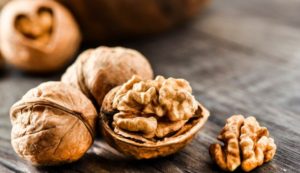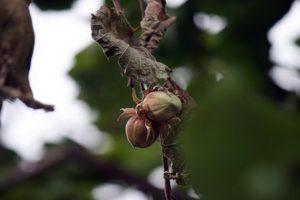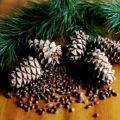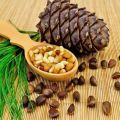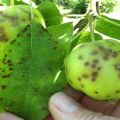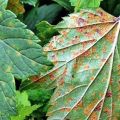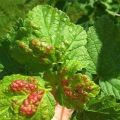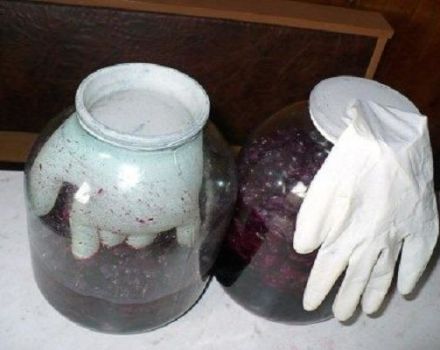Description of the causes and symptoms of cedar diseases, how to deal with pests
When growing conifers, you need to prepare in advance for the fact that sooner or later you will have to face a cedar disease. There are many symptoms that will tell you what kind of disease affected the tree. Having understood the rules of treatment, it will be possible to quickly get rid of the lesion and prevent the death of the plant.
What diseases and pests are cedar prone to and how to deal with it
Usually the defeat of the Siberian cedar is extremely rare, the tree has immunity against infections. With age, the plant's endurance decreases, there is a risk of developing fungal diseases, even unfavorable conditions can harm the tree.
Fungi often colonize the plant, especially with improper care or growing in high humidity conditions. Insects can also damage the tree and cause disease.
Spruce mite
A considerable danger for the cedar is the spruce mite, which feeds on the juice of young needles. After the pests work, the needles wrinkle, lose their juicy green tint, and dry out completely. Measures to combat them are regular treatments with Fitoverm.
Folk remedies cannot be used, the tick will withstand the treatment and will continue to parasitize on the needles of the cedar.
Spider mite
The spread of a spider mite on a tree is easy to recognize, the presence of a pest has several signs. The following symptoms indicate the presence of an insect:
- thin spider web on the needles;
- dried up needles;
- yellow needles.
Against the tick, solutions of "Fufanon" are used, prepare strictly according to the instructions.
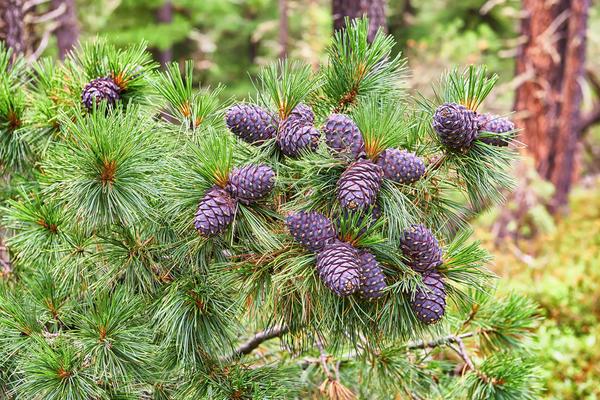
Aphid
It is not difficult to identify aphids on a cedar, rather large insects densely occupy branches and needles. What to do to get rid of the pest? Irrigation of the tree with "Karbofos" is recommended. It is better to carry out several treatments at intervals of 10 days.
Small spruce false shield
The pest provokes an intensive fall of needles, often even small branches begin to crumble. If the necessary measures are not taken in a timely manner, there is a risk of losing the tree.
To get rid of false shields, insecticidal preparations are used. Treatment with "Lepidocide" is often carried out, especially if the pest colony has already occupied the entire cedar.
Hermes pine
Hermes larvae densely populate cedar needles and resemble a gray bloom. If you look closely at it, tiny insects are easily distinguished.The larvae are incapable of harming an adult tree, but young plants can easily be destroyed. To get rid of hermes, use "Fufanon", "Iskra" (to process on the needles), it is also recommended to water the cedar abundantly with "Aktara".
Pine scoop
You will have to face a scoop in the spring, insects, with the onset of heat, actively pounce on the needles, gnaw completely on the branches, suck out the contents of the buds. In arid regions, the destructive work of the pest leads to the extinction of huge plantations. Usually the biological product "Lepidocide" is used (three times treatment).
Seryanka
The main symptom of the disease is the formation of branches, a cedar trunk on the surface. In the spring, etsidia (yellow-gray mass) appears from them. In the absence of treatment, the spores in the etsidia rapidly spread through the wood, which leads to the weakening of the tree and subsequent death.
It will not be possible to cope with the disease, the only way out to prevent damage to healthy trees is to remove the diseased cedar.
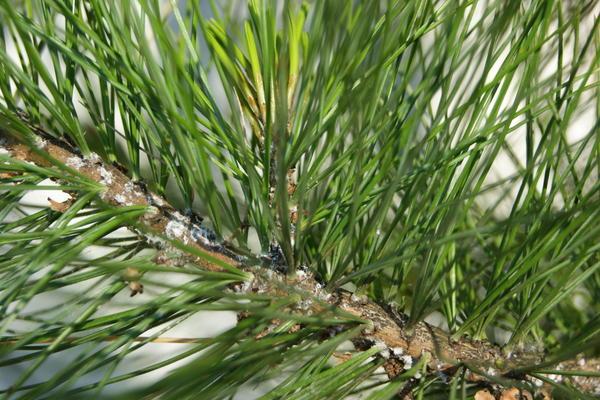
Moth
The moth butterfly does not harm the conifers, but its larvae are destructive, which in May rapidly begin to feed on needles. Caterpillars destroy everything in the path, leaving bare branches (often pests eat even young shoots). It is recommended to use insecticidal agents against the enemy of conifers. One treatment is not enough - to carry out 3-4 irrigation of needles.
Rust diseases
When damaged by rust diseases, a white bloom appears on the needles, branches. The lesion usually begins in the kidneys and, if untreated, spreads rapidly throughout the tree. The needles of cedar pine fall off, the plants begin to dry out. For their treatment, use fungicidal preparations. If possible, make stem injections (injected under the bark of the ephedra).
Shootweed pine silkworm
Usually the pest penetrates into young shoots and buds. The evidence of the presence of the silkworm is the deformed tips of the branches. Lack of measures will lead to drying out of the cedar.
The control measure is the complete removal of the affected parts of the tree. Be sure to complete the procedure by spraying the cedar with Fastak.
The first signs of infection and disease of cedar pine
A change in the shade of the needles should alert the owner of the cedar pine. If the needles have become lighter or covered with an unpleasant bloom, you should carefully examine the affected branches. Be sure to check the kidneys, usually pests are hiding there.
The next sign of the disease is the falling off of the needles. If you do not take the necessary measures and do not carry out processing, the branches will begin to dry out, indicating that the damage to the wood has begun.
Measures to improve tree resilience
Regular treatments and proper care will help prevent cedar diseases. Make preventive irrigation with insecticides at least three times per season. It is better to start in spring, it is with the onset of stable heat that pests activate work.
Watch out for watering, the high moisture content of the soil is detrimental to the tree and helps to reduce immunity. A weakened plant gets sick and is attacked by pests much more often.

How to protect cedar from insect invasions and diseases
To protect the conifers in the garden from pests and infections, it is recommended to plant a suitable neighborhood. Such plants will scare away insects and prevent the development of diseases:
- mint;
- root;
- marigold;
- lavender;
- castor oil plant;
- sage.
Of the trees, a walnut will be an excellent neighborhood for cedar pine, which repels most pests.
You should not be afraid of diseases or insects that can harm the cedar - timely treatments will get rid of the enemies of the tree and prevent death.
The main thing is to carefully examine the plant, immediately react when pests are found, and do not forget about preventive treatments.
